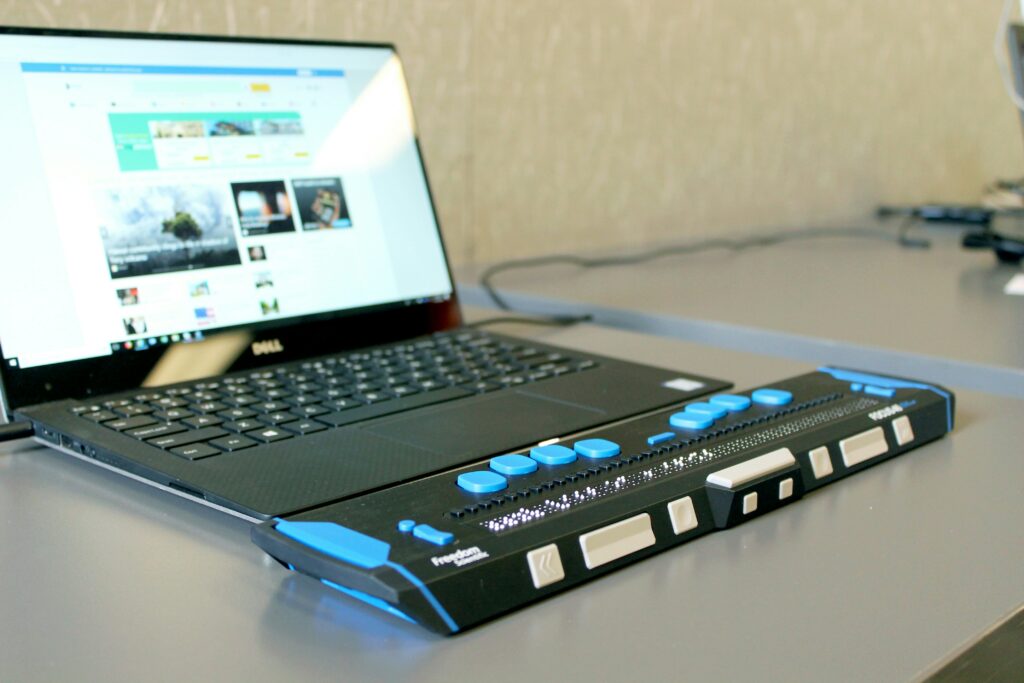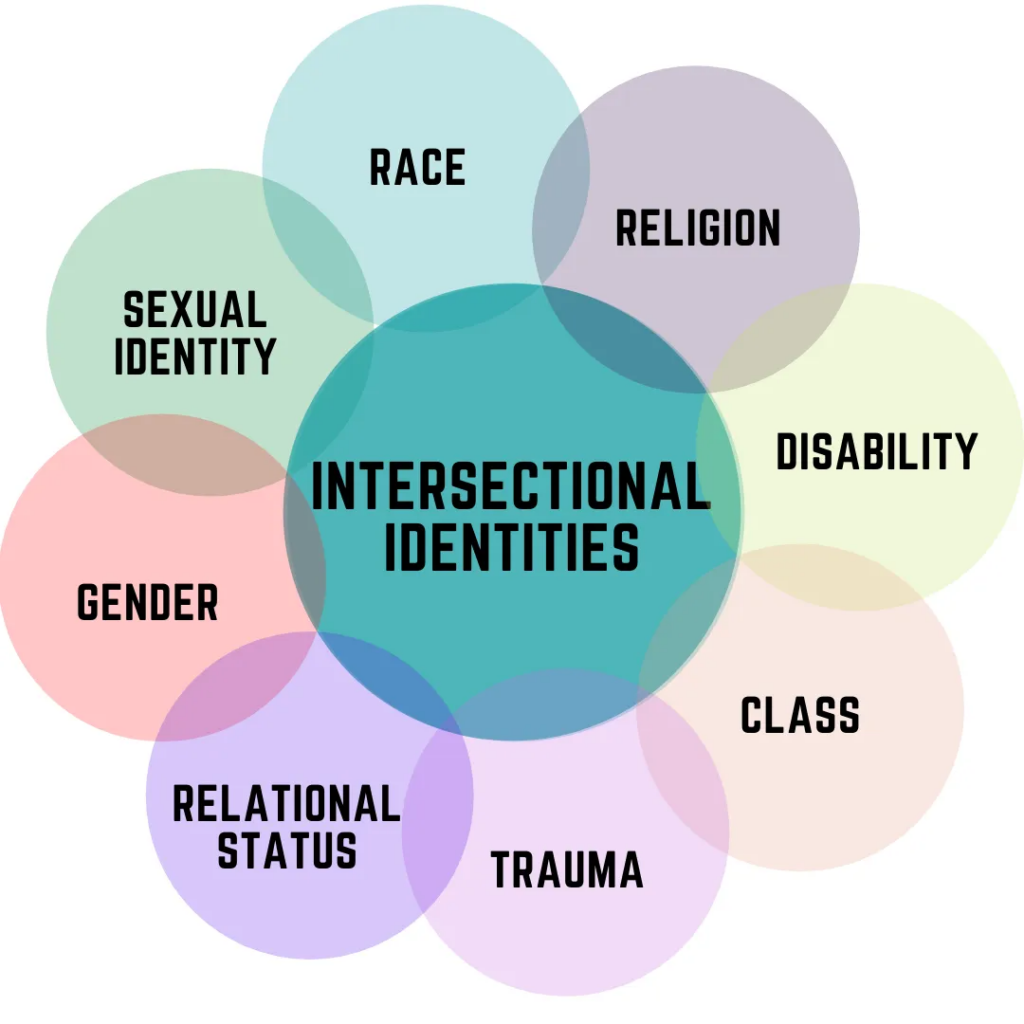
Image shows a laptop computer with an external braille keyboard with bright blue buttons. Photo by Elizabeth Woolner on Unsplash
This week we were joined by Kaori Lau and Tracy Humphries, two members of the BCEd Access Society. BCEd Access provides support to families of students with disabilities and complex learnings across BC. They offer peer support and resources, and advocate for equitable access to education and systemic changes within our province.
We covered a bunch of topics, the first of which was a serious reflection on what it means to be treated differently, and to be told that you won’t be receiving the same education as your peers. Of course Tracy didn’t follow through on segregating our classroom along arbitrary lines (the colour of sticky note randomly assigned to us when we entered), but the exercise allowed us to reflect on how it feels. We also reflected on our own identities, and how they impact our day to day experiences of the world.

After the introduction, we dove into the accessible technology within the school system, covering “designations” and IEPs, or Individualized Learning Plans, types of assistive technology and how to integrate them into your classroom, and generally how to build an inclusive classroom.
Assistive Technology – The Only Non-negotiable Tech
I think we’ve come a long way with disability rights here in Canada, and it’s wonderful to see accessibility and access as a feature of so many organizations’ goals, including of course public K-12 education. However, as with all forms of discrimination, ablism is still a current that runs deeply through our society. Coming from a background in anthropology, I’m very aware of how culture is a lens through which we see the world. When we are raised in an ableist culture, one that views people with disabilities as less valuable, those beliefs become ingrained in us, despite our best personal intentions. It takes active work to challenge our prejudices.
How To Build and Acessable Classroom
In the classroom this work shows up as an obligation to normalize different student needs. Often, as under a Universal Design for Learning (UDL), providing multiple means for engagement, representation, action, and expression means that everyone in your class can participate. Often it can be simple things like adding close captions to an audio clip, accepting written or spoken and recorded assignments, or allowing a student to record lectures or instructions. UDL also often benefits everyone in the classroom. It’s like the idea that replacing stairs with ramps may help those who regularly use a wheelchair, but it also makes buildings more accessible for elderly people, those with young children in strollers, or anyone who is temporarily on crutches due to a broken ankle. A recorded lecture may help a student with dyslexia study for a test, but it also helps the student who has to miss class for a sports trip.
Unfortunately, this isn’t always easy. Teachers need to examine their own prejudices, which is challenging work. Students, parents, and teachers need to contend with systemic inequities, like schools paying certain technologies, like Chromebooks, but not others. It means treating students with disabilities as equally capable as their non-disabled peers and providing the same kid of opportunities for growth and leadership.
Sorry, but comments are not enabled on this site.